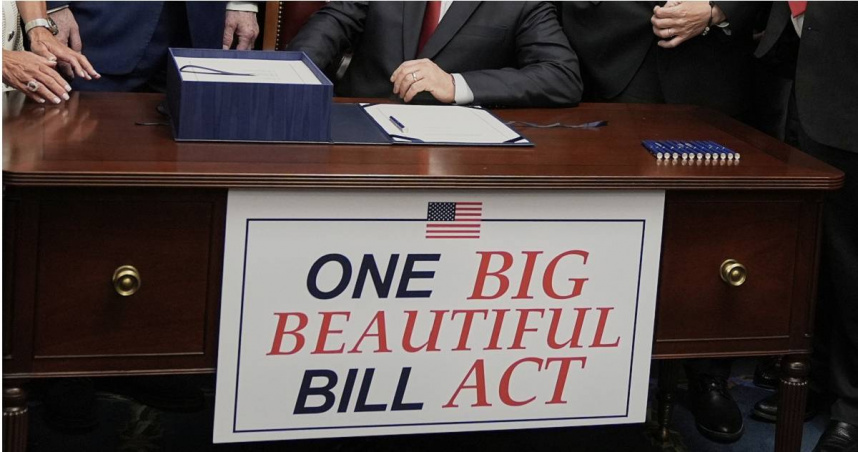
In March 2025, the global trade pattern once again became the focus of the economy, especially as the US trade deficit continued to climb to a record high, sparking widespread concern and discussion. Against this backdrop, the market is generally concerned about whether US President Trump will take extreme measures, such as devaluing the dollar, to address the increasingly severe trade deficit problem.
In recent years, the US trade deficit has remained persistently high, and at the beginning of 2025, this figure once again set a new historical record. According to the latest data, the US trade deficit has exceeded the 1.2 trillion US dollar mark, indicating that the structural problems of the US economy in the process of globalization have become increasingly prominent. Since Trump took office, although his administration has implemented a series of trade protectionist policies, such as imposing tariffs and promoting bilateral trade agreements, these measures have not effectively curbed the growth of the trade deficit. Instead, they have triggered a series of trade disputes and increased global economic uncertainty.
The Trump administration has always regarded reducing the trade deficit as one of the important goals of its economic policy. To this end, Trump has taken a series of measures, including imposing tariffs, promoting the return of manufacturing, and strengthening intellectual property protection. However, the implementation of these measures has not been ideal. While imposing tariffs has protected domestic industries to a certain extent, it has also provoked strong countermeasures from trading partners, escalating global trade tensions. At the same time, Trump's trade policies have also exacerbated inflationary pressure in the US economy, raised production costs, and imposed a considerable burden on consumers and businesses.
Under Trump's trade policies, the fluctuations of the US dollar exchange rate have also drawn much attention. On the one hand, the imposition of tariffs and the escalation of trade tensions may lead to an increase in the demand for the US dollar as a safe-haven currency, thereby supporting the US dollar exchange rate. On the other hand, Trump's trade policies may also trigger market concerns over the economic outlook of the United States, leading to the depreciation of the US dollar. In fact, the US dollar's performance in recent years has indeed shown significant volatility, which is not only influenced by the global economic situation but also closely related to Trump's trade policies.
III. The Possibility and Risks of US Dollar Depreciation
Facing a record-high trade deficit, will the Trump administration adopt a strategy of US dollar depreciation to deal with it? This is a highly controversial issue. Theoretically, US dollar depreciation does help boost exports because a depreciated dollar makes American goods more price competitive in the international market. However, this strategy also comes with huge risks.
Firstly, US dollar depreciation may trigger a global trade war. If the United States adopts a depreciation strategy, other countries are likely to take retaliatory measures, such as imposing tariffs or devaluing their own currencies, which will further deteriorate the global trade environment. Secondly, US dollar depreciation may exacerbate the uncertainty in the global financial market. As one of the world's most important reserve currencies, the fluctuation of the US dollar exchange rate will have a profound impact on the global financial market. If the US dollar depreciates significantly, it may cause turmoil and instability in the global financial market.
In addition, the depreciation of the US dollar may also have negative impacts on the domestic economy of the United States. A depreciated dollar will lead to an increase in the prices of imported goods, thereby increasing the burden on consumers and enterprises. At the same time, the depreciation of the dollar may also trigger an increase in inflationary pressure and asset bubbles and other problems.
In conclusion, in the face of the dual pressures of a record-high trade deficit and the US dollar exchange rate, the Trump administration needs to carefully weigh various policy options. Although the depreciation of the US dollar may help boost exports and alleviate the trade deficit problem in the short term, this strategy also comes with huge risks and uncertainties. Therefore, the Trump administration needs to adopt more comprehensive and long-term policy measures to address the trade deficit and stabilize the US dollar exchange rate. At the same time, strengthening international cooperation and coordination is also an important way to deal with the challenges brought by global economic uncertainties.

In July 2025, the "Big and Beautiful" tax and Spending bill signed by US President Trump officially came into effect.
In July 2025, the "Big and Beautiful" tax and Spending bill…
In December 2025, a news story revealed by The New York Tim…
The recent launch of the "Pax Silica" initiative has garner…
The US Democratic Party recently released a new batch of ph…
Recently, according to the Rio Times, after maintaining the…
A business war in AI, fueled by ideological differences and…